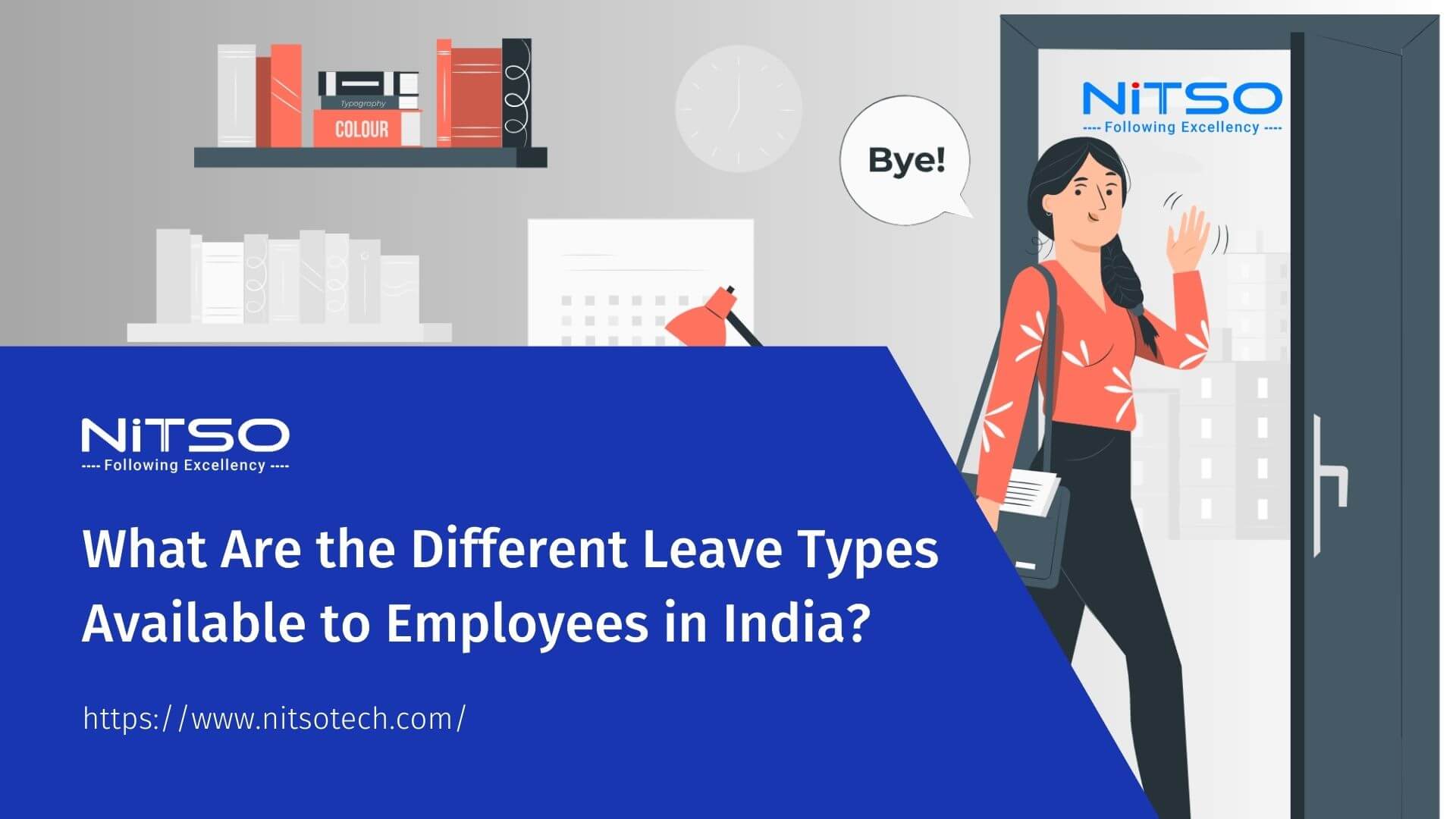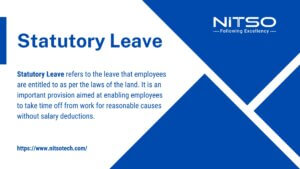Leave entitlements and policies in India have undergone many changes over the years. The leave types in India have evolved to include options that aim to promote work-life balance along with employee engagement and well-being. Understanding the different leave types in India that employees are eligible for is crucial for effectively managing leave and ensuring compliance with labour laws.
Some of the most common leave types in India that employees in the private sector are entitled to include annual or privilege leave, casual leave, sick leave, and maternity & paternity leave, based on government labour laws and organizational policies.
In this comprehensive guide, we will provide an in-depth overview of the major leave types in India that employers must provide. Whether you are an employee looking to understand your leave benefits or an HR professional managing leave policies, this guide covers all the key aspects of the different types of leave in India. Make sure to read through the various sections to get a full understanding of the leave options and rules applicable based on your situation. Proper knowledge of the leave types in India can help ensure you maximize your leave benefits as per labour law compliance requirements.
Table of Contents
What Are The Types of Leave in India?
1. Annual Leave
Annual leave, also known as privilege or earned leave, is one of the most common leave types offered to employees in India. It provides paid time off work that employees can utilize for any purpose, such as vacations, personal needs or religious observances. Understanding the provisions around annual leave entitlements and usage is important.
Overview of Annual Leave
The Annual leave policy in India originated under the Factory Act. Full-time employees working in factories were entitled to one day of annual leave for every 20 days of work. The Factories Act 1948 increased this entitlement to 1 day of annual leave for every 15 days of work. Employees with over 20 years of experience could accrue up to a maximum of 30 days of annual leave in a year.
For other employees not covered under the Factories Act, annual leave policies are governed by company HR policies and employment contracts. A common annual leave accrual rate is up to 30 days per year depending on years of service. Many modern organizations also offer increased leave accruals or unlimited leaves to attract talent.
Calculating Annual Leave Entitlement
The annual leave entitlement for an employee is calculated based on:
- Years of service at the company
- Accrual rate applicable as per company policy
- Any caps on maximum leave accrual in a year
For instance, an accrual policy of 24 days annual leave per year will entitle an employee with 5 years of service to accrue 24 days of leave in that particular calendar year. If the policy has a cap of 30 days, accrual will stop once the employee reaches the 30-day limit. Leave is calculated on a pro-rata basis, so employees joining mid-year will have proportionate leave.
Using and Managing Annual Leave
Companies generally have policies on annual leave usage protocols like requiring prior approval and planning for adequate cover during leave. Best practices suggest using a Leave Management System to efficiently manage leave requests, approvals, tracking of balances and reporting.
As annual leave is an earned benefit, employees must make sure to fully utilize their leave within prescribed time limits. Some annual leave policies permit the carry forward of unused leave to next year up to a specified limit. Excess leave lapses or can be encashed based on policy. Planning leave well in advance and using permitted carry forwards can help optimize annual leave utilization.
2. Sick Leave
Sick leave is an important provision made by companies to cover periods when employees are unable to work due to temporary illness or injury.
Overview of Sick Leave
The Factories Act mandates that factories with over 250 workers should provide 12 days of sick leave annually to their workers. For other organizations, sick leave policies are defined in their HR policies and employment contracts.
A common sick leave provision is 12-15 days per year. Some progressive companies offer unlimited sick leave. Sick leave is calculated on a pro-rata basis for employees joining mid-year. Pay during sick leave is either at full pay or half pay based on company policy. Any unused sick leave lapses at the end of the year.
Using Sick Leave
Employees are expected to inform their manager before taking sick leave or as early as possible in case of an emergency. Based on the leave policy, employees may need to provide a medical certificate from a registered medical practitioner when taking sick leave beyond a specified number of days.
Sick leave should be used only in cases of genuine medical emergencies, sickness, injuries or hospitalization of the employee. It should not be used for extending other leaves or illegitimate purposes.
Sick Leave Abuse
Companies keep track of sick leave utilization patterns to prevent leave abuse. Excessive or suspicious sick leaves can warrant a warning, denial of sick pay, or disciplinary action as per company policy. Employers should have clear policies and procedures for addressing sick leave abuse.
The sick leave provisions as per labor law provide important income and job security to employees in times of health contingencies. Both employers and employees should ensure proper utilization of sick leave based on its intended purpose.
3. Casual Leave
Casual leave is granted over and above regular leave types in India like annual and sick leave. It offers employees flexibility to take leave for short durations without affecting their regular leave balances.
Overview of Casual Leave
While casual leave is not statutorily mandated, many companies provide casual leave entitlements based on HR policy. A common provision is 12-15 days of casual leave in a calendar year for full-time permanent employees. Casual leave is calculated on a pro-rata basis for joining mid-year.
The main features of casual leave include:
- It is fully paid leave.
- Unused casual leave lapses at the end of the year.
- It cannot be combined with any other type of leave.
- Not entitled to employees under probation.
Usage Scenarios for Casual Leave
Casual leave can be utilized for discretionary purposes like:
- Short-planned personal trips
- Religious occasions
- Important family functions
- Unplanned contingencies
- Illness of a family member
- Emergency situations
Employees should apply for casual leave in advance as per company policy except for unforeseen events. Casual leave provides a good backup option to cover small leave requirements without impacting regular leave.
Both employers and employees should ensure casual leave is used only for legitimate purposes as per policy. Its flexible nature can lead to abuse if not managed properly. Tracking usage patterns through leave management software allows better oversight over casual leave.
4. Maternity and Paternity Leave
Maternity and paternity leave provisions in India aim to provide job security and adequate paid time off for new parents around childbirth or adoption.
Maternity Leave
The Maternity Benefit Act, of 1961 entitles women employees to 12 weeks of maternity leave for up to two live births. For adopting or commissioning mothers, maternity leave of 12 weeks is permitted up to the age of 15 months for the child.
Key provisions under the maternity leave policy are:
- Full wages to be paid for the leave period
- Maternity leave can be availed up to 8 weeks before the expected date of delivery
- Extension of leave permitted in case of illness or medical complications
- Provision to work from home after maternity leave if required
- Nursing breaks are to be provided after rejoining
In addition to maternity leave, some companies offer enhanced benefits like 4-6 months leave at full pay.
Paternity Leave
There is no statutory provision for paternity leave under Indian labour law. Many companies provide 5-15 days of paid paternity leave per birth of a child as per their internal policies.
Paternity leave allows fathers to provide support during childbirth and bond with the newborn. Some organizations offer flexible work arrangements or extended leaves to new fathers.
Parental Leave
Parental leave refers to extended paid or unpaid leave from work that both mothers and fathers can avail to take care of children. While not common, some companies are beginning to offer paid parental leave of 2-6 months.
Providing adequate maternity, paternity and parental leave options promotes gender diversity, work-life balance and morale for new parents. Organizations should craft progressive policies that go beyond the basic legal compliance for maternity leave.
5. Other Leave Types in India
In addition to the major types of leave covered so far, some other common types of leaves granted by companies in India include:
- Bereavement Leave – Most companies provide bereavement leave of 3-5 days when an employee experiences a death in the immediate family or close relative. This paid leave allows employees to make arrangements and attend funeral/religious ceremonies during the grief period without affecting regular leave balances. Some policies may permit an extension of bereavement leave based on the situation.
- Study Leave – Employees pursuing higher academic qualifications like a degree or professional certification are often granted study leave. The duration and pay eligibility (full pay, half pay, unpaid) depend on employer policy. Employees are expected to utilize study leave responsibly to focus on academics and complete assessments, while ensuring work responsibilities are handled. Employers can mandate provisions like a minimum service period eligibility and obligated service post-study leave.
- Marriage Leave – A marriage leave of 3-7 days is commonly given when an employee gets married as per company policy. It is generally fully paid leave to enable the employee to manage marriage preparations and ceremonies. Supporting documents like a marriage invitation may need to be submitted as per policy. Marriage leave cannot be clubbed with regular leave without appropriate approvals.
- Jury Duty Leave – If an employee receives a court order for jury duty, the company is obligated to grant paid leave as necessary to fulfil the civic obligation. The exemption can be applied in exceptional cases based on business requirements. Employees summoned must inform their employer immediately about the jury duty notice.
- Sabbatical Leave – Some organizations permit extended sabbatical leave of 2-12 months for personal development initiatives like higher studies, writing books, travel, voluntary work or other enrichment activities that also benefit the company. Employees need to discuss and get approval on sabbatical leave plans with employers well in advance. Leave may be paid, unpaid or at partial pay.
- Voluntary/Unpaid Leave – Employees can opt for voluntary unpaid leave for reasons like travel, family commitments or personal needs, with employer approval. The company may specify conditions like minimum service periods, mandatory utilization of paid leaves first, limits on leave duration, etc. for availing unpaid leaves.
- Compensatory Off – Compensatory leave is granted instead of working on company-declared holidays or overtime. Policies usually define scenarios warranting compensatory time off and limits on accumulation. Compensatory leaves should be availed within a defined period, and lapsing rules may also apply.
- Leave Without Pay (LWP) – If employees have exhausted all eligible paid leaves, companies may grant leave without pay on a case-to-case basis depending on the situation, length of service and past leave records. Employees do not get paid for the duration of LWP and continuity of service benefits may be impacted based on policy.
While optional, providing well-drafted policies on such other leave options promotes employee empowerment. Companies should implement compliance checks and maintain documentation to prevent misuse.
What Are the Types of Leave for Government Employees in India?
Government employees in India enjoy more generous leave entitlements compared to the private sector. Here are some of the key leaves available:
- Earned Leave – Accrues at a rate of 2.5 days per completed month of service. Encashment of 300 days is permitted at retirement.
- Half-Pay Leave – 20 days for each completed year of service. Can be converted to 10 days of full-pay leave.
- Commuted Leave – Total leave balance can be commuted to half-pay leave for twice the duration.
- Leave Not Due – Availing up to 360 days of advance leave in case no leaves are available.
- Maternity Leave – 180 days paid leave available for government employees.
- Paternity Leave – 15 days paid leave.
- Childcare Leave – 730 days of unpaid leave for women employees.
- Sabbatical Leave – Study leave or leave for specialized work, contingent upon years of service.
- Vacation Leave – One month of vacation leave during service.
In addition, government employees are entitled to national, festivals and special holidays as declared for the public sector. Employees posted in difficult areas also get special concessions. You can check out the government holidays list on https://www.india.gov.in/calendar.
The extensive leave benefits for government employees aim to promote work-life balance and motivation. However, public sector organizations should still monitor leave usage and have policies to prevent misuse.
Parting Words
India’s leave policies and regulations aim to promote employee well-being by providing adequate paid time off from work for various personal and professional needs. As an employee, make sure to understand the leave entitlements you are eligible for based on your sector, years of service, and employer policies. Plan and manage your leaves judiciously, adhering to approval protocols. Avoid leave abuse by using leaves only for genuine purposes.
As an employer or HR professional, draft compliant leave policies, implement leave management systems, monitor leave trends, and take steps to curtail leave misuse. Overall, a good understanding and management of the various leave types in India can help both employees and employers optimize leave utilization for mutual benefit. This guide summarizes all the key leave options – make sure to use it as a reference to make informed decisions about leaves during your career.








0 Comments